By Shaney Hudson
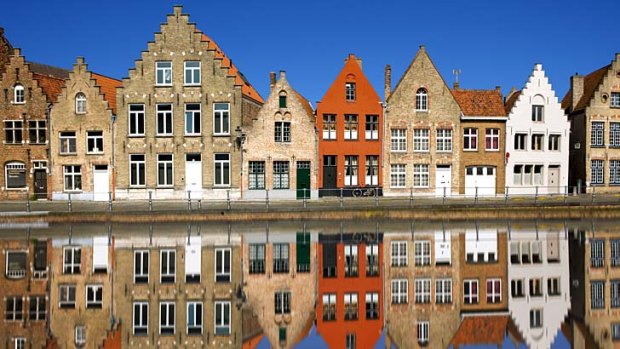
Storybook European city ... Bruges.Credit: Getty Images
1 It's stunning
If you're after a storybook European city, Bruges ticks every box: horse-drawn carriages plod along tiny cobbled streets, handmade stone bridges cross over canals filled with swans, gargoyles watch from the corners of Gothic churches and at night, slightly askew towers are illuminated by golden light. The UNESCO World Heritage-listed historic centre is one of the best-preserved mediaeval cities in Europe, but remember to get a little lost: secret gardens and quiet, picturesque spots are waiting to be discovered across the city.
2 Beguinage
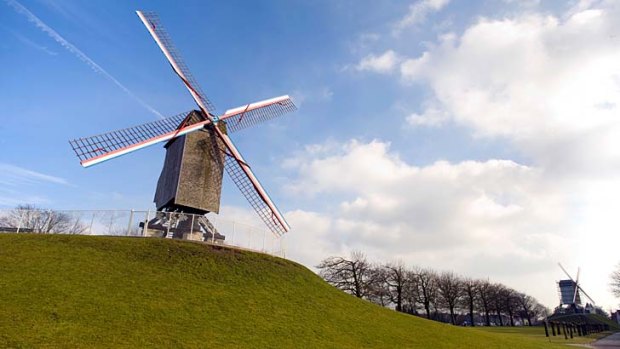
St Janshuis windmill, one of only four of Bruges's original remaining windmills.Credit: Alamy
The Beguinage was established in 1245 and is home to nuns of the Order of Saint Benedict. The public can peek inside but silence is required at all times in the large grounds, which are planted with trees, lined with manicured garden beds and accessed by a bridge over the canals. A small museum on the charitable work of the nuns is open by donation, but be sure to exit by 6pm, when the gates are locked to the public.
3 Beer market
Housed in a 15th-century mayor's house, 2Be in Bruges is worth a quick look for its novelty wall of more than 780 Belgian beers. Grab a drink at the magnificent terrace overlooking the Dijver canal and check out its two-storey speciality shop, which only stocks goods made in Belgium, including a whole floor devoted to speciality Belgian beers, including some brewed by Trappist monks. 2-be.biz/index.php.
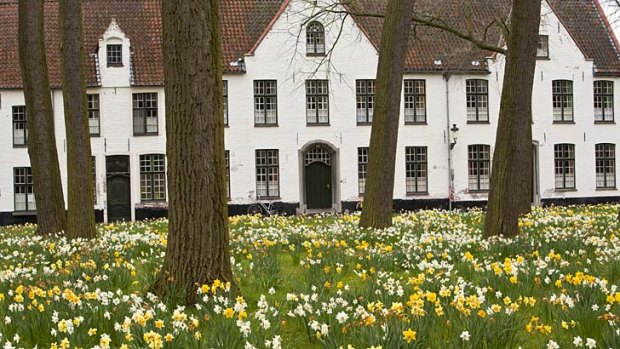
The Beguinage ... established in 1245, it is home to nuns of the Order of Saint Benedict.Credit: Getty Images
4 Brewery tour
Established in 1856, the family-owned De Halve Maan brewery is the last remaining brewery in the historic centre. Climb up staircases, down ladders and through the attic on its 45-minute tour, which looks at the history of drinking and beer in the city and reveals the secret to avoiding a hangover - drink beer brewed with coriander seeds. A complimentary glass of T'Zot brew, made from hops, malt and special yeast, is included at the end of the visit. www.halvemaan.be.
5 Basilica of the Holy Blood
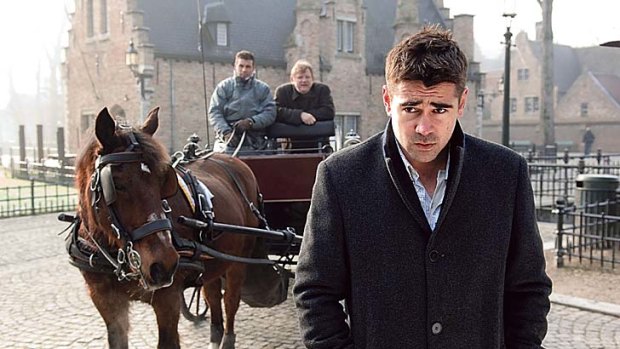
Colin Farrell in a scene from In Bruges.
Bruges is home to one of Europe's most revered religious relics - a chalice said to hold a few precious drops of Christ's blood, brought back to Europe during the Crusades in 1150. The chalice is only displayed each Friday afternoon for a short period at the Basilica of the Holy Blood, which is up a discreet flight of stairs on the Burg Square. Even when the chalice is not on display, the beautifully adorned basilica has a warm atmosphere and stunning stained-glass windows.
6 Choco Story
Surprisingly comprehensive, the four-level Choco Story, the Chocolate Museum is a must for sweet tooths. The museum looks at the production and history of Belgian chocolate, with a mix of artefacts and displays that include chocolate mortars from South American tribes, porcelain chocolate stoves used by European women and old lolly wrappers from the turn of the century. Chocolate-making demonstrations and tastings are held daily, and the souvenir shop includes chocolate-making equipment. www.choco-story.be.
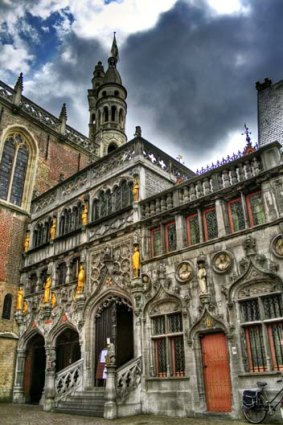
Warm atmosphere ... Basilica of the Holy Blood.Credit: Alamy
7 Windmills
Windmills used to dominate the Flemish countryside, but today only four of Bruges's original windmills remain standing on the outskirts of town. They were built in the 1700s, and it is well worth the walk to the edge of the historic centre to see them turning with surprising speed during the summer months. The Sint-Janshuis Windmill, which is set on a grassy hill by the canals and was used to mill grain, is open to the public during summer and includes a small museum.
8 Chocolate
Bruges is home to more than 50 chocolate shops, serving everything from sandwich-size chocolate crackles to delicate pralines filled with wasabi. Highly recommended is Dominique Persoone's The Chocolate Line on the Simon Stevinplein, where you can see chocolates being prepared by hand through a large glass wall at the back of his store. Look out for Michelin-starred chef Bart Desmidt's speciality chocolate brand BbyB, which focuses on decadent flavour combinations such as basil and passionfruit syrup covered in white chocolate.
9 Seafood specialities
Just 15 kilometres from the sea, Bruges is famed for its hearty seafood dishes and delectable mussels. The city's open-air, undercover fish market moved to its current location near the Groenerei Canal in the 1820s and still operates from Tuesday to Saturday each week. Most restaurants have a strong seafood menu, but a good choice is Cafedraal, with its generous portions of traditional Flemish seafood specialities, such as mussels with white wine, alongside more contemporary dishes such as crayfish carpaccio. cafedraal.be.
10 Get your bling on
Bruges is the oldest diamond-trading centre in Europe, and the diamond museum focuses on the social and economic history of the precious stones, including the insatiable demand for luxury goods in the Burgundy court. A number of hands-on exhibitions teach visitors about how to measure the brilliance, cut, clarity, diameter and weight of a diamond. And if you visit, be sure to check out the diamond-polishing demonstrations, held daily at noon, and Boris, the Ukrainian robot who can manufacture a synthetic diamond from graphite in less than seven minutes. diamondmuseum.be.
11 Groeninge Museum
In the 15th century, Bruges was an attractive place for prominent artists to take up residence, with volumes of work being commissioned by the church and wealthy citizens. The Groeninge Museum has a comprehensive collection of the Flemish Primitives' artwork, which was characterised by detailed realism and expert use of oil techniques. Today, more than 200 works from the 15th century to the modern day hang in 11 galleries, including a fantastic 15th-century map detailing the historic centre.
12 Canal tours
Bruges is best seen from the waterline, so make your way to one of the five launch posts through the city centre for a 30-minute boat tour. Boats leave when filled and the captain provides an excellent narrative of the city, pointing out the mix of Romanesque, Gothic and baroque architectural styles throughout the city while passengers duck their heads to clear the low-lying bridges. These tours shut down during the winter months, although occasionally the canals freeze over and the whole city turns out to ice skate on them.
13 Hospital museum
For eight centuries, whether you were a traveller, a pilgrim or the sick, you were welcomed to the Hospital of St John and attended by the nuns and monks there. Today visitors are able to view the delicate 13th-century records, some of the mediaeval surgical instruments and archaeological relics found beneath the building. Don't miss out on a visit to the traditional 17th-century apothecary around the corner. It's seldom visited and perfectly restored, and the sound of horses' hooves on the cobblestones outside will transport you back in time.
14 Belfry
Lit up by golden light at night, the Belfry lies at the heart of the city, overlooking the Markt, the city's central square. Built in 1240, the tower, which served mainly as a lookout for invaders, has been destroyed by fire multiple times and added to over the centuries. The 83-metre-high landmark leans towards the east, and it's a dizzying 366-step climb to the top. However, the view over the historic centre to the surrounding countryside is well worth the risk of vertigo.
15 Friets
Call it a hot chip, call it a French fry, but whatever you do, be sure to smother it in lashings of creamy sauce. Flemish street food doesn't get better or more affordable than a big bag of friets. Two traditional friet booths are part of the Markt below the belfry, but the crispiest offerings can be found at Chez Vincent, just a short walk away. Cooked fresh in pure vegetable oil, sourced direct from the farmer and never frozen, Chez Vincent's authentic Belgian fries are served in a traditional jumbo cone. chezvincent.eu.
16 Get on your bike
Once you've broken free of the cobbled centre, Bruges is an excellent place to cycle, linked to a number of villages in the countryside by a well-marked network of paths. A number of bike-hire companies have an office in the historic centre and the tourist office has free bike maps, although once you leave the centre, cycle mainly in a straight direction until you either reach the sea or decide to turn back. Damme, a well-preserved market town five kilometres from Bruges, is the most popular destination for riders.
17 In Bruges
Two popular works of fiction have resulted in an influx of visitors to Bruges. The first, which was written in 1892, was Bruges-la-Morte, which painted Bruges as a mysterious town and led to the birth of its tourism industry. The second is the cult black comedy In Bruges, starring Colin Farrell and Ralph Fiennes. While some of the film's golden lines about the city aren't fit to print, the city's main attractions played a critical part in the storyline and were showcased beautifully. The tourism office's website includes a special "movie map" guide to all the film's shooting locations. brugge.be.
18 Hidden beauty
Bruges is home to more than 20 almshouses, which were established by churches and charitable institutions centuries ago as safe refuges for widowers and spinsters. Taking up an entire block, homes faced inward around a private internal garden and sometimes even had their own church. Today, many of the properties have become private homes but the gardens are open to the public. Most are not advertised, so it's best to ask around or simply keep an eye out for glimpses of beauty through half-open doors.
19 In Flanders fields
Flanders Fields and a number of other important World War I battlefield sites can easily be visited on a day trip from Bruges. Passchendaele, Hill 60 and the In Flanders Field Museum in Ypres, along with a number of war memorials and cemeteries, can be accessed by car or on an organised tour. A popular excursion is a visit to the Menin Gate in Ypres at night, where at 8 o'clock the Last Post is sounded in memory of those who fought in the Great War. visitbruges.org.
20 Michelangelo
Art lovers will drool over Michelangelo's marble sculpture Madonna and Child, which was the only work by the artist to leave Italy during his lifetime. Twice stolen away from the city - first during the 1700s, when it was feared Bruges would be invaded, and then during WWII, when soldiers smuggled it to Germany - the marble sculpture is now the pride of the Welcome Church of Our Lady, where it is encased behind bulletproof glass. museabrugge.be.
Sign up for the Traveller Deals newsletter
Get exclusive travel deals delivered straight to your inbox. Sign up now.